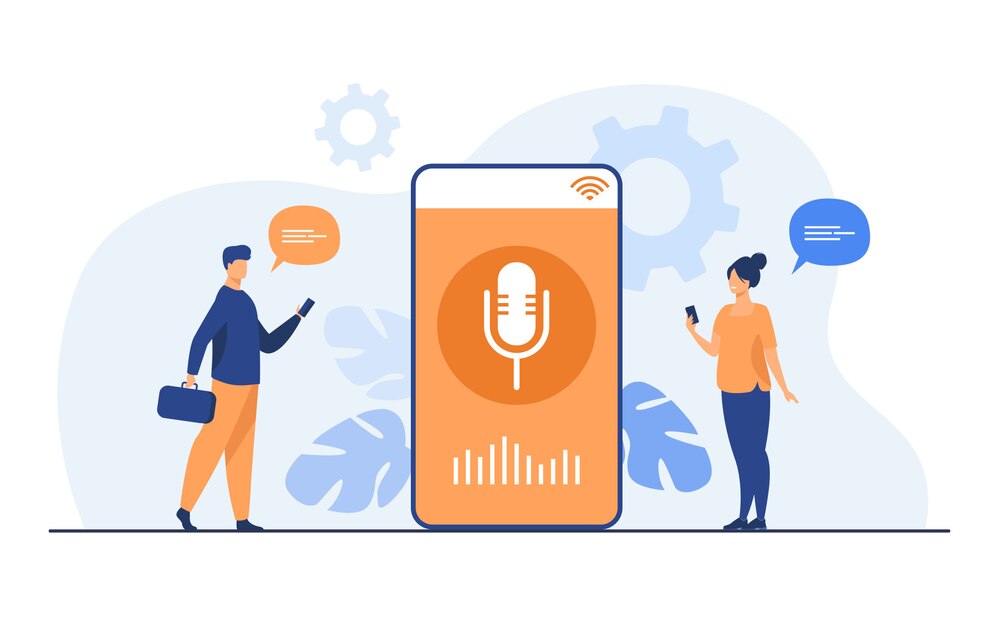How To Engage Voice API Conversations With Automatic Speech Recognition
-
March 13, 2024
-
6 min read

Technology plays a critical role in the way organisations interact and operate. Among the many tools available is automatic speech recognition technology. When integrated into business operations, it streamlines interactions and empowers companies to enhance productivity.
An automatic speech recognition system transcribes spoken language into text. It allows machines to understand and respond to queries and commands. In this way, it facilitates seamless and efficient communication.
Automatic speech recognition has widespread applications in various industries. These range from customer service to virtual assistants. As businesses embrace applications for automatic speech recognition, they redefine effective communication strategies to meet their goals.
The Transformative Features of Automatic Speech Recognition
Nowadays, automatic speech recognition applications have several features to enhance the user experience and facilitate natural conversations.
Some of these features include:
Real-Time Transcription: Voice recognition software can transcribe spoken words into text instantaneously. This real-time transcription feature enhances communication efficiency. Whether in meetings, customer service interactions, or remote collaborations, the ability to convert spoken language into text at the moment means rapid information sharing and documentation. This process saves time and ensures accuracy in capturing details, allowing for immediate reference and follow-up actions.
Speaker Recognition: An advanced automatic speech recognition model has speaker recognition capabilities. This functionality allows for personalised interactions by identifying individuals. Responses or actions can be tailored according to user profiles. Speaker recognition also enhances security in sectors like finance or healthcare.
Language Adaptability: An automatic speech recognition system can recognise and identify multiple languages and dialects. This adaptability makes it a vital tool for global businesses. They can engage with international clients, conduct multilingual meetings, or analyse data from sources worldwide. It facilitates communication and collaboration across borders.
Noise Cancellation: Another important aspect is the capacity to filter out background noise. With noise cancellation algorithms, the system can recognise spoken words even in noisy environments. This capability ensures the software remains reliable in crowded office spaces, busy call centres, or remote work scenarios.
Customisation: Developers can customize automatic speech recognition applications for domains and applications. Businesses can match their unique communication needs by fine-tuning the software for industry-specific terms. This customisation enhances the ability to transcribe specialised conversations in healthcare and legal sectors, for example.
Understanding How Automatic Speech Recognition Works
Automatic speech recognition models typically follow these five stages:
- Speech acquisition: The system captures audio input in the form of spoken words from a microphone or other audio source.
- Feature extraction: The software processes the audio signal to extract features such as pitch, frequency, and intensity.
- Acoustic modelling: By using machine learning algorithms, the system compares the features to a database of sounds and speech patterns.
- Language modelling: Through contextual analysis based on grammar and vocabulary, the software analyses the words and phrases to understand the meaning of the speech.
- Decoding and Output: Finally, the system generates the most probable text output in the form of a transcript of the spoken words.
With AI Automatic Speech Recognition, businesses can transform communication dynamics. The sophisticated algorithms and machine learning enable seamless conversion of spoken language into accurate text. It can be precise, adaptable and continuously evolving.
Leveraging Automatic Speech Recognition for Engaging Voice API Conversations
As we have seen, automatic speech recognition can transform how enterprises interact with machines to make conversations more natural and appealing. Developers can create programming interfaces for seamless communication between users and applications.
Here are some ways to leverage the technology for engaging voice API conversations:
Conversational IVR
Traditional IVR menus often require users to navigate options and listen to repetitive instructions. With conversational IVRs, natural language interactions allow users to speak and receive guidance directly. They can resolve simple issues without human intervention, freeing up agents’ time and improving efficiency.
The natural and user-friendly experience leads to higher customer satisfaction and improved brand loyalty.
Virtual Assistants
Virtual assistants can learn individual user preferences and adapt their responses, for a more personalised and helpful experience. They can handle many tasks, from scheduling appointments to setting reminders.
Virtual assistants can be accessed through voice commands or text input, making them accessible to a wide range of users, including those with disabilities.
Voice-Activated Devices
Voice-activated devices allow users to control smart homes and appliances with voice commands. The devices can control lights, locks, and other home automation features to improve safety and security.
They provide a hands-free alternative to traditional controls. Devices become more accessible to everyone.
Voice-Enabled Customer Service Chatbots
Voice-enabled chatbots can answer customer questions and resolve issues 24/7, regardless of agent availability. It adds up to a convenient experience for customers and improves service levels.
Chatbots can handle simple inquiries quickly and efficiently. The result: reduced wait times and improved customer satisfaction.
Chatbots can also be trained to communicate in multiple languages, to support a wider range of customers.
Overall, automatic speech recognition enhances user experiences, improves efficiency, and drives business growth. As technology evolves, the possibilities for more engaging conversations continue to expand.
The Versatile Applications of Automatic Speech Recognition
Automatic speech recognition technology is versatile. It can be used for a wide range of applications across various industries.
| DOMAIN | APPLICATION |
| Customer Service | Virtual assistants and chatbots can handle customer inquiries. They provide product information and resolve issues efficiently. |
| Healthcare | It can be used for medical transcription. Doctors can record patient interactions accurately and efficiently. |
| Education | It can personalise learning experiences by creating voice-activated tutors and interactive educational resources. |
| Media and Entertainment | It can be used for audio and video captioning to make content more accessible. |
| Business | It can automate data entry and transcription to improve productivity and reduce costs. |
| Automotive | The technology can be integrated into vehicles for hands-free calling, navigation, and infotainment systems. |
Understanding the Challenges of ASR
While ASR technology offers many benefits, there are still some challenges that remain.
For example, background noise can impact accuracy. Depending on the application, developers need to implement advanced noise reduction techniques. In the same way, accents and dialects also require extensive data to improve results.
Recording and storing user voice data raises privacy concerns. Enterprises need to put robust security measures into place and be aware of ethical considerations.
With advances in technology, the above challenges can be overcome more easily.
Automatic Speech Recognition: The Bottom Line
Automatic speech recognition is an essential tool for businesses to improve and enhance their processes. The technology is rapidly evolving, offering exciting possibilities for engaging and natural voice-based interactions.
By leveraging the capabilities of automatic speech recognition, businesses can unlock new opportunities for communication, collaboration, and productivity. The integration of automatic speech recognition into Programmable Voice APIs has led to innovative applications across industries. Users get more intuitive and efficient ways to interact with devices and applications.
Automatic speech recognition technology continues to enhance accuracy and expand capabilities. It is paving the way for a future where voice-based interactions become even more integral. With end-to-end automatic speech recognition, there will be even wider adoption and integration across various industries.
To further understand the potential of automatic voice recognition technology and discover voice api solutions for business growth and customer engagement, get in touch with Airtel experts today.
 Share
Share









